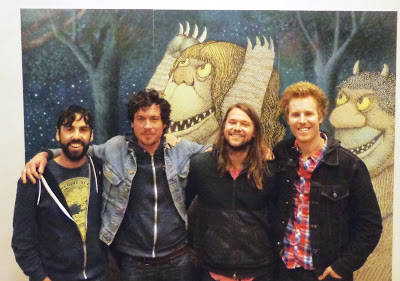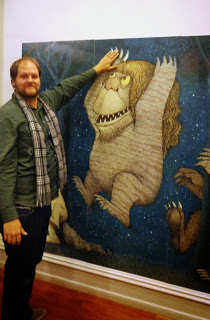A little over two years ago Maurice Sendak gave what would be his last interview for NPR’s Fresh Air with Terry Gross. Sendak had been on the show a number of times and fans have commented on Sendak and Gross’s rapport, which only grew over the years. But this interview was different. Still reeling from the loss of a close friend but also celebrating the publication of Bumble-Ardy (HarperCollins, 2011), Sendak shared with Gross his thoughts on both the creative life and the end of life, of grieving for others and for oneself, and of the courage it takes to be honest in both life and art. Sendak’s death just eight months later gave an added poignancy to the interview: for many listeners, he seemed to be saying goodbye, and that he had no regrets. A glance at the comments section of the interview web page will give you a sense of how deeply moved many listeners were by this frank conversation. Among those listeners were members of the Missouri band Ha Ha Tonka, then working on a new album, Lessons (Bloodshot Records), which came to be partly inspired by this Fresh Air interview. They recently paid a visit to the Rosenbach during the Philadelphia leg of their tour.
 |
| Ha Ha Tonka (left to right): Lennon Bone (drums); Luke Long (bass); Brett Anderson (vocals, guitar, keyboards, mandolin); Brian Roberts (lead vocal and guitar) |
In its very title Lessons implies a retrospective view of life in keeping with Sendak’s reflections in his Fresh Air interview. Most of the songs–including “Staring at the End of Our Lives,” “Cold Forgiver,” and “The Past Has Arms”–bring that idea home within multi-rhythmic compositions wrapped around catchy guitar, mandolin, and piano melodies. Frontman Brian Roberts pointed out that the very first lyric on the album, from a song called “Dead to the World,” harks back to Sendak’s interview: “I’m almost to the age where I only do/ Things that I know how to do…” (Sendak: “I feel like I’m working for myself at this point. If it’s publishable,
fine. If not, it makes not too much difference. Because I claim that
this time is for me and me alone. I’m 83 years old.”). This isn’t to say that Sendak was “dead to the world”–the album seems to pick up on the artists’s irrepressible vitality and search for meaning in his interview–or that the record is without moments of humor (there’s this from “Terrible Tomorrow:” “I can see little thought bubbles/ Over everyone’s head/ And it’s causing me trouble/ It’s a dangerous thing/ When everyone’s thinking out loud.”). There’s something particularly Sendakian about the album’s hit single, “Colorful Kids,” which not only sounds like a reference to Sendak’s illustrated characters but also shares Sendak’s sometime mistrust of adulthood as an (as the lyrics say) “ugly shade of gray.”
Sendak almost exclusively listened to classical music, and his favorite pieces or composers often made their way into his pictures. The influence of music on Sendak’s art really can’t be underestimated. How fitting that a group of musicians found their inspiration in this artist, reaffirming the creative synergy between music and art that Sendak so believed in. He may even have been pleased that they included strings on a few songs.
 |
| Tour manager Mark “Smash” Miller high-fives a Wild Thing |
 |
| From the liner notes to Lessons |
Patrick Rodgers is Curator of the Maurice Sendak Collection at the Rosenbach Museum & Library and a poor music critic.
